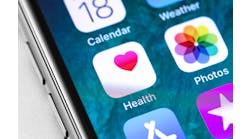According to researchers from the University of Central Florida, various things such as education level, income, and age, are not huge influential factors in health literacy and consequently a person’s desire to use a personal health record (PHR). The researchers surveyed 562 patients in a medical practice in Florida, representing 14 percent of the patient population, and found that a wide range of patients, even those with a low education level, accepted PHR technology.
The findings were published in the online journal, Perspectives in Health Information Management. The researchers’ survey found 74 percent of the participants indicated that they would adopt a PHR. The age range 41–55 years was the most common age group (29 percent), and 77 percent of those patients were willing to adopt a PHR if it was offered. The majority of patients (52 percent) had a high school education or less, and 71 percent of those indicated a willingness to adopt a PHR. Thus, even those patients who were at risk for low health literacy were interested in using a PHR.
Furthermore, most patients (59 percent) were in the lowest income category (less than $20,000 annually) for 2008, and 75 percent of those indicated a willingness to use a PHR. “Therefore, patients in this practice at risk for low health literacy, with low education, advanced age, and/or low income, are willing to adopt the PHR, and many perceive their health literacy level to be high,” the authors wrote in the report.
The authors say this presents a conflicting view to the known risk factors of low health literacy. According to the authors, “Physicians who plan to provide a PHR for their patients should look beyond the demographic characteristics, which may not represent the patient population in terms of their perceived health literacy.”
The highest indicator of which patients may use a PHR is not demographic related, but rather who uses the internet for health research. Of those who were not willing to use a PHR, only 48 percent answered “I know how to use the Internet to answer my questions about health” in the affirmative. Only 41 percent said they use the health information on the internet to help them. On the flip side, 76 percent of those who were willing to use a PHR answered the first part affirmative, and 72 percent said yes to the second one.

